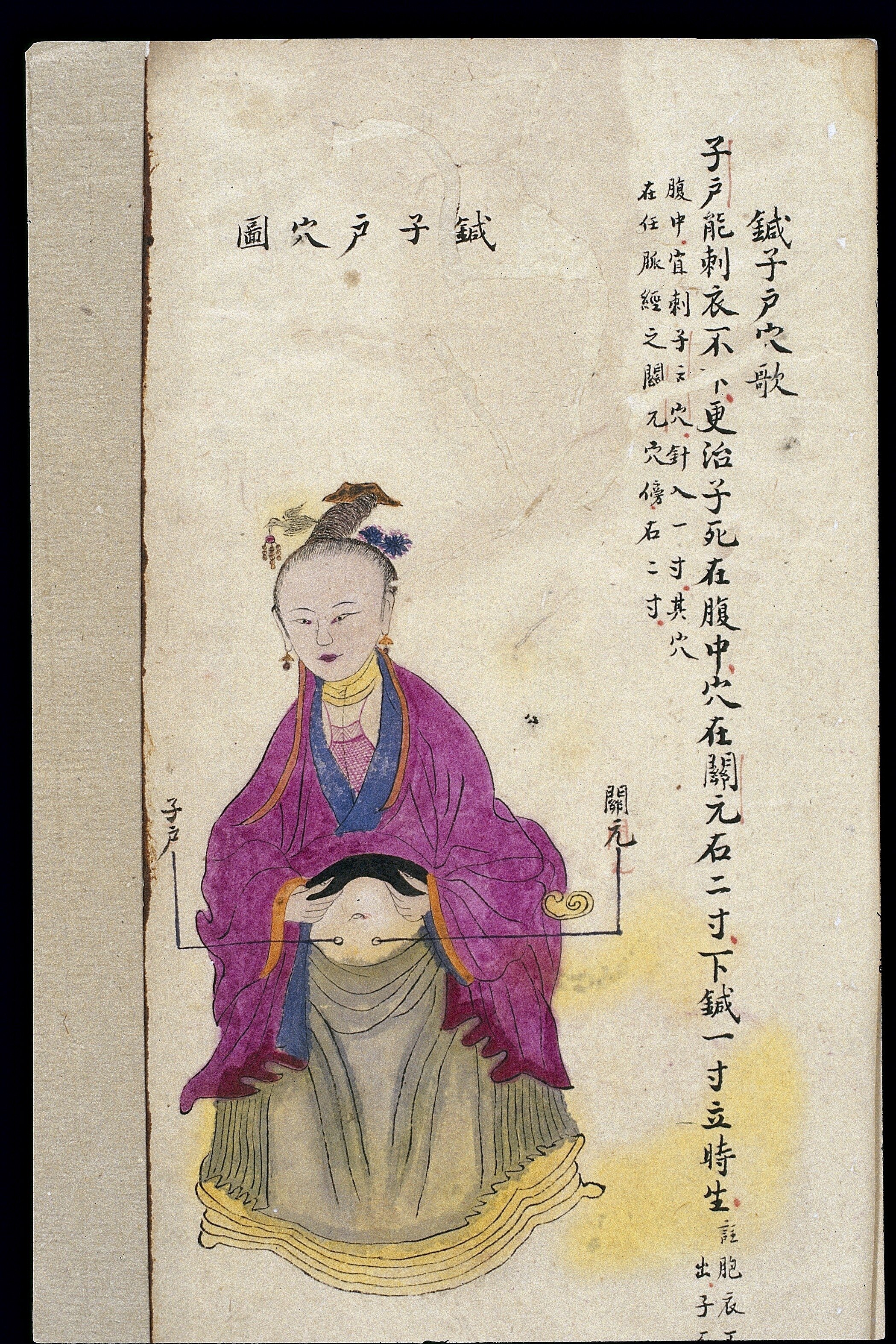Menstruation, fertility, and gynaecological health have been well documented and understood throughout Chinese history. Some of the earliest written records discussing childbirth and simple gynaecological conditions are said to be found inscribed into bones and tortoise shells dating back to the Shang dynasty (1500-1000BC). Details of medicinal plants in the treatment of infertility were documented as early as the fourth century BCE in the Shanhai Jing – The Book of Mountains and Seas 山海經. During the Sui Dynasty period (580-620), a famous physician known as Chao Yuan Fang wrote an important text titled the Zhubing Yuanhou Lun “General Treatise on the Symptomatology and Aetiology of Diseases” 諸病源候論, in which Chao details over 280 individual syndromes involving diseases of menstruation, leucorrhoea, pregnancy, and post-partum conditions.
According to traditional Chinese Medical theory, the Uterus is known as Bai Gong, which literally translates as the ‘Palace of the Child’ and is considered a sacred place that required great protection and nourishment. Its main functions include the regulation of the menstrual blood, conception, and pregnancy. The Bai Gong was not viewed as a separate organ, rather, it included the fallopian tubes, ovaries, and cervix. Its main functions involve the storing and discharge of menstrual blood, thickening of the endometrium as well as inducing ovulation.
The Uterus relies on healthy oxygenated blood circulation from the Heart to support healthy menstruation and prepare to ripen the cervix as well as a healthy balance of reproductive/growth hormones produced and regulated by the endocrine system. The blood vessel that connects the Heart to the Uterus is known in TCM as the Bai Mai (Uterus Channel), placing great importance on the relationship between the Heart and the health of the Uterus.
According to TCM, the Heart houses the Shen (神), the most subtle form of Qi in the human body which is greatly associated with an individual’s spiritual consciousness. It is said that when an individual is healthy and living a grounded and balanced life, the Shen is rooted and supported by the Heart. The physical Heart regulates the movement of the Shen through the body, like how blood travels through the vessels nourishing and regulating the tissues and cells. In cases where an individual has experienced significant trauma, stress, and substantial blood loss, the Shen becomes uprooted and causes the Heart to become agitated.
As the Heart and Uterus share such a strong internal connection, the Uterus is significantly vulnerable to excessive emotional stress and anxiety. During periods of heightened emotional stress, our Heart Qi becomes disturbed and prevents the blood from descending to the Uterus. Over time, the lack of circulation through the Bai Mai causes the blood (stasis) to coagulate and form clots causing painful periods or in certain cases an absence of menstrual bleeding. Basically, the Heart pauses any reproductive functions temporarily as it is more concerned over the safety and blood supply to the vital organs.
Along with the Heart, the Uterus also shares an important internal pathway with the Kidneys, this is known as the Bao Luo (Uterus Collateral). The relationship between the Kidneys and the Uterus is more associated with the production and secretion of reproductive hormones and the essence, Jing (精). Jing is the densest form of energy in the body, meaning that it plays a vital role in the health of the physical tissues, development, and constitution of an individual. From a Western medical perspective, the Jing can be viewed as the DNA and genetic qualities that are inherited from our parents and environments. Jing is much denser than Shen, so it is slower to change and influence, however poor diet, medication, recreational drugs, excessive stress, and poor health can all over time deplete its quality and amount leading to a decline in physical, hormonal, and neurological decline.
In gynecological terms, the Jing is responsible for the production and regulation of reproductive hormones such as estrogen, testosterone, and progesterone as well as human growth hormones and gonadotrophin-releasing hormones during puberty. In healthy individuals, the regulation of these hormones follows a recognized pattern of change every seven years which prepares a woman for pregnancy. According to TCM, a woman is usually fully prepared for pregnancy between the ages of 21-28 (however with modern advancements in medicine and hygiene this is now debatable). If a woman is exposed to poor health conditions such as environmental toxicity, poor nutrient-rich diet, early drug or alcohol abuse, and/or regular medication, the quality of her endocrine health will be greatly affected, and her chances of becoming pregnant are much lower.
The Chinese have considered the Kidneys as the essence of all five internal organs for thousands of years. Great lengths have gone to ensure the understanding and importance of reproductive health with many doctors and scholars over centuries describing various herbal tonics, exercises, and acupuncture to preserve the Jing and longevity of the Kidneys. Specific acupuncture points spread throughout the body such as Guanyuan - Gate of Origin (關元) have been recognized since the Nan Jing – Classic of Difficulties (800-200 BCE)
for their ability in strengthening the Jing, nourish the Kidneys, and assist conception by treating various gynaecological conditions such as infertility, amenorrhoea, bleeding during pregnancy, persistent flow of lochia, post-partum abdominal pain, red and white leucorrhoea.
The ancient Chinese have understood that the combination of good vascular health, a mind that is calm and grounded along with a hormonal balance is the foundation for fertility and a healthy pregnancy. Our next blog will explore the concept of the Tian Gui - Heavenly blood and menstruation.
This post is dedicated to all mothers, daughters and sisters who seek to learn more about their health and well being to benefit their lives and the lives of others.







